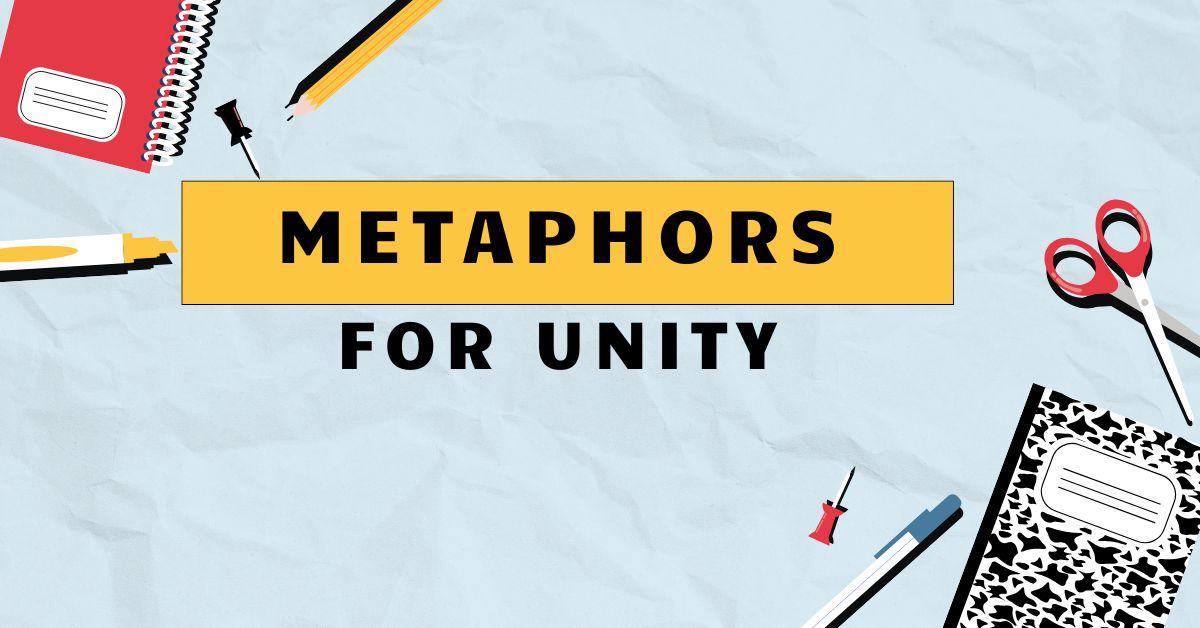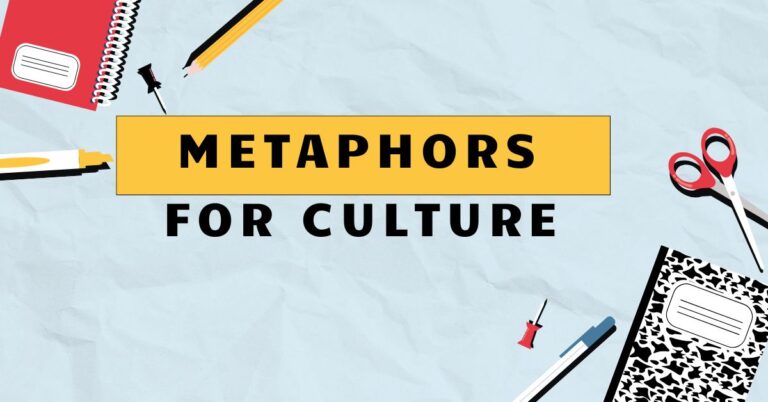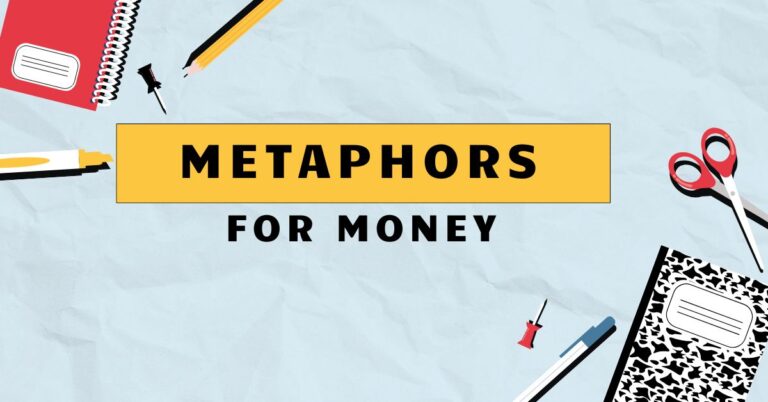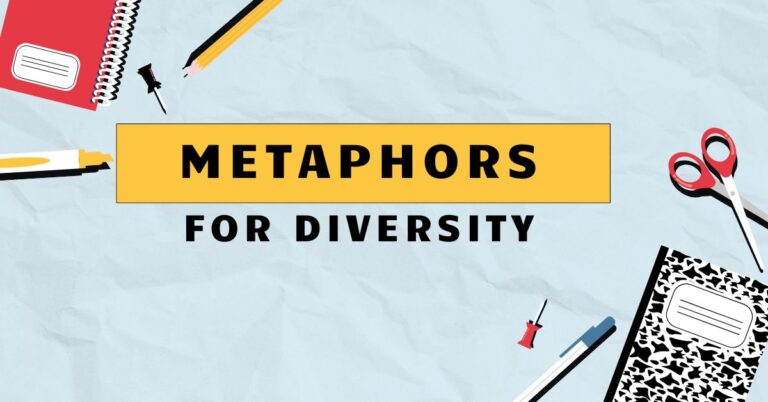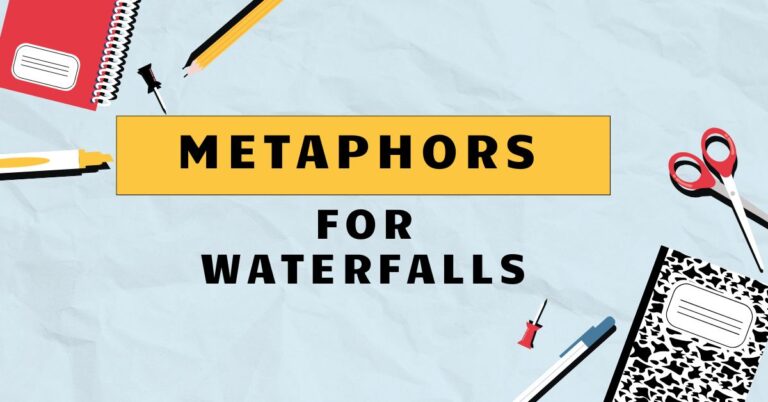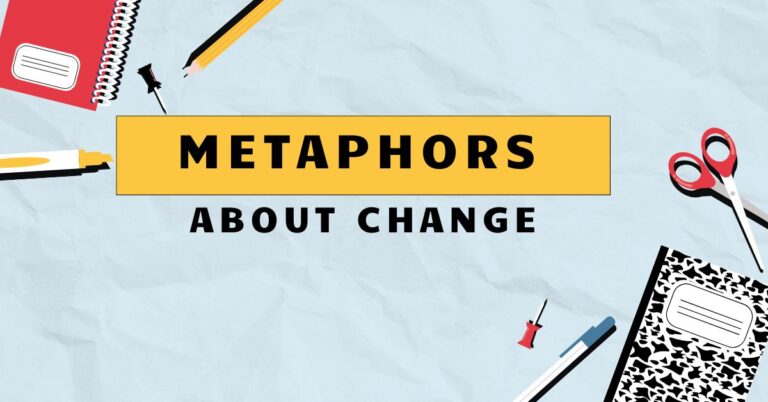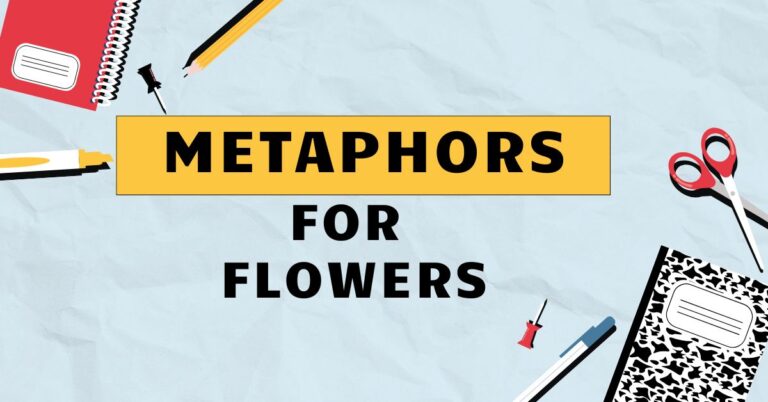47 Metaphors for Unity: Understanding Figurative Language
Metaphors are powerful tools in the English language, enabling us to convey complex ideas and emotions in vivid and memorable ways. Understanding how metaphors function, particularly those related to unity, enhances both our comprehension and expression.
This article delves into the world of metaphors for unity, exploring their structure, types, usage, and common pitfalls. Whether you’re an English language learner, a seasoned writer, or simply curious about the nuances of language, this comprehensive guide will equip you with the knowledge and skills to effectively use and interpret metaphors of unity.
Table of Contents
- Introduction
- Definition of Metaphor for Unity
- Structural Breakdown of Metaphors
- Types of Metaphors for Unity
- Examples of Metaphors for Unity
- Usage Rules for Metaphors
- Common Mistakes with Metaphors
- Practice Exercises
- Advanced Topics in Metaphorical Analysis
- Frequently Asked Questions
- Conclusion
Definition of Metaphor for Unity
A metaphor is a figure of speech that directly compares two unrelated things without using “like” or “as.” It asserts that one thing *is* another, creating a connection based on shared characteristics or qualities. Metaphors are essential for adding depth, color, and emotional resonance to language.
They allow us to understand abstract concepts in more concrete terms.
Ametaphor for unityspecifically employs this figurative comparison to describe or evoke a sense of togetherness, cohesion, or harmony. These metaphors often use concrete images or concepts to represent the abstract idea of unity, making it more relatable and understandable.
They can be used to inspire, persuade, or simply to illustrate the importance of working together.
The function of metaphors for unity is multifaceted. They serve to illustrate the benefits of collaboration, highlight the strength found in numbers, and underscore the interconnectedness of individuals within a group or society.
They can also be used to critique situations where unity is lacking, exposing the fragmentation and instability that can result. The effectiveness of a metaphor for unity lies in its ability to resonate with the audience, creating a shared understanding and emotional connection.
The context in which a metaphor for unity is used significantly impacts its interpretation. A metaphor used in a political speech will likely be interpreted differently than the same metaphor used in a poem or a business presentation.
Factors such as the speaker’s intent, the audience’s background, and the overall tone of the communication all contribute to the meaning and impact of the metaphor. Consider the cultural context, as some metaphors may have different connotations in different cultures.
For example, a metaphor related to weaving might evoke a strong sense of interconnectedness in a culture with a rich weaving tradition, while it might be less impactful in a culture where weaving is not as prevalent.
Structural Breakdown of Metaphors
Understanding the structure of a metaphor is crucial for both creating and interpreting them effectively. A metaphor typically consists of two main elements: thetenorand thevehicle.
The tenor is the subject being described, while the vehicle is the object or concept used to describe it. The connection between the tenor and the vehicle is called theground, which represents the shared characteristics or qualities that make the comparison meaningful.
Consider the metaphor “Teamwork is the glue that holds us together.” In this example, “teamwork” is the tenor (the subject being described), “glue” is the vehicle (the object used for comparison), and the ground is the shared quality of binding or holding things together. The metaphor works because glue is known for its ability to create a strong bond, and this quality is transferred to the concept of teamwork.
The effectiveness of a metaphor depends on the strength and relevance of the ground. A strong ground creates a clear and compelling connection between the tenor and the vehicle, making the metaphor easily understandable and memorable.
A weak or irrelevant ground, on the other hand, can lead to confusion and undermine the impact of the metaphor. Therefore, when crafting a metaphor, it’s important to carefully consider the shared characteristics between the tenor and the vehicle and ensure that they are clearly and logically connected.
Furthermore, metaphors can be eitherexplicitorimplicit. An explicit metaphor directly states the comparison, as in the example above.
An implicit metaphor, on the other hand, implies the comparison without explicitly stating it. For example, instead of saying “The team is a well-oiled machine,” an implicit metaphor might say “The team operates with seamless precision,” implying the comparison to a well-oiled machine without directly stating it.
Recognizing whether a metaphor is explicit or implicit is essential for accurate interpretation.
Types of Metaphors for Unity
Metaphors can be categorized into different types based on how they structure our understanding of the world. Understanding these categories can help us analyze and appreciate the nuances of metaphorical language.
Structural Metaphors
Structural metaphors are those in which one concept is structured and understood in terms of another, more concrete concept. These metaphors are pervasive in our language and thought, shaping how we perceive and interact with the world.
For example, the metaphor “argument is war” structures our understanding of arguments as battles, with winners and losers, offensive and defensive strategies, and so on. This metaphor influences how we approach arguments, often leading to combative and adversarial interactions.
Similarly, metaphors for unity can be structural, framing unity in terms of other concepts.
Orientational Metaphors
Orientational metaphors give concepts a spatial orientation, such as up-down, in-out, front-back, and so on. These metaphors are often rooted in our physical experiences and cultural conventions.
For example, “happy is up” and “sad is down” are common orientational metaphors that associate positive emotions with upward direction and negative emotions with downward direction. In the context of unity, we might say “The team is on the rise,” implying that the team is becoming more unified and successful.
Orientational metaphors can add a sense of direction and progress to our understanding of unity.
Ontological Metaphors
Ontological metaphors treat abstract concepts as concrete entities, allowing us to refer to them, quantify them, and reason about them as if they were objects or substances.
For example, “the mind is a container” is an ontological metaphor that allows us to speak of “filling our minds with knowledge” or “having thoughts in our heads.” In the context of unity, we might say “Unity is a strong foundation,” treating unity as a concrete object that provides stability and support. Ontological metaphors can make abstract concepts like unity more tangible and accessible.
Examples of Metaphors for Unity
Here are several examples of metaphors for unity, categorized by the specific image or concept used to represent unity. Each category provides a different perspective on what unity means and how it can be achieved.
Unity as a Structure
These metaphors depict unity as a building, bridge, or other structure, emphasizing its strength, stability, and interconnectedness.
The following table provides examples of metaphors that depict unity as a structure. Each example is accompanied by an explanation of the metaphor’s meaning and its implications for understanding unity.
| Metaphor | Explanation |
|---|---|
| “The team is the bedrock of the company.” | The team provides a solid foundation for the company’s success. |
| “Their collaboration built a bridge between departments.” | Collaboration facilitated communication and understanding between departments. |
| “The community is a tapestry woven from diverse threads.” | The community is made up of different individuals who come together to create a rich and complex whole. |
| “The coalition formed a strong pillar of support.” | The coalition provided a reliable and unwavering source of assistance. |
| “The partnership is the cornerstone of the project.” | The partnership is the essential element that the project is built upon. |
| “The agreement is the framework for future cooperation.” | The agreement provides the structure and guidelines for ongoing collaboration. |
| “The alliance is the scaffolding that supports their efforts.” | The alliance provides temporary support to help them achieve their goals. |
| “The organization is a well-constructed edifice.” | The organization is carefully designed and built for long-term success. |
| “The union is the mortar that binds the bricks together.” | The union provides the essential element that holds the organization together. |
| “The network is the web that connects us all.” | The network provides a system of connections that links individuals together. |
| “The group is a fortress against adversity.” | The group provides a strong defense against challenges and difficulties. |
| “Their bond is the foundation of their success.” | Their strong relationship provides the basis for their achievements. |
| “The movement is a rising tide that lifts all boats.” | The movement benefits everyone involved, regardless of their individual circumstances. |
| “The system is a complex architecture.” | The system is intricately designed and organized. |
| “Their friendship is a solid structure that withstands the test of time.” | Their friendship is strong and enduring, able to overcome challenges. |
| “The team’s unity is the steel frame of their project.” | The team’s unity provides the essential strength and support for their project. |
| “The organization’s principles are the load-bearing walls of their mission.” | The organization’s principles are fundamental and essential to achieving their mission. |
| “The constitution is the blueprint for their nation’s future.” | The constitution provides the plan and guidelines for the nation’s development. |
| “The community garden is a fertile ground for unity.” | The community garden provides an environment where unity can grow and thrive. |
| “Their shared vision is the cornerstone of their partnership.” | Their shared vision is the most important element of their partnership, upon which everything else is built. |
| “The treaty is the keystone in the arch of peace.” | The treaty is the central and essential element that supports peace. |
| “The family is the building block of society.” | The family is a fundamental and essential unit of society. |
| “Their combined efforts formed a dam against the flood of challenges.” | Their collaborative work effectively blocked and overcame the overwhelming challenges. |
Unity as a Journey
These metaphors portray unity as a path, voyage, or other journey, emphasizing the process of coming together and the progress made along the way.
The following table presents metaphors that describe unity as a journey, highlighting the process and progress involved in achieving it.
| Metaphor | Explanation |
|---|---|
| “The team is on the same page.” | The team members share a common understanding and are working towards the same goal. |
| “They are walking the same path towards a shared vision.” | They are collectively striving to achieve a common objective. |
| “The community is navigating the waters of change together.” | The community is collectively adapting to new circumstances. |
| “The organization is charting a course towards greater unity.” | The organization is strategically planning to enhance its cohesiveness. |
| “The alliance is embarking on a journey of collaboration.” | The alliance is beginning a process of working together towards shared goals. |
| “The partnership is paving the way for future success.” | The partnership is creating opportunities and laying the groundwork for future achievements. |
| “The coalition is moving forward as a united front.” | The coalition is progressing with a unified approach. |
| “The group is traveling together towards a common destination.” | The group is collectively working towards a shared objective. |
| “The union is forging a path towards greater solidarity.” | The union is creating a way to strengthen its unity and support among members. |
| “The network is expanding its reach to connect more people.” | The network is growing and connecting more individuals. |
| “The movement is gaining momentum as it progresses.” | The movement is becoming more powerful and influential as it advances. |
| “Their journey towards unity is a marathon, not a sprint.” | Achieving unity requires sustained effort and perseverance over time. |
| “The community is on a pilgrimage to build a better future.” | The community is collectively striving to create a more positive and prosperous future. |
| “Their combined efforts are propelling them forward on their mission.” | Their collaborative work is driving their progress towards achieving their objectives. |
| “The organization is setting sail towards new horizons of collaboration.” | The organization is embarking on new opportunities for working together. |
| “Their shared vision is the compass guiding them through challenges.” | Their shared vision provides direction and helps them navigate obstacles. |
| “The team’s progress is a staircase leading to success.” | The team’s incremental improvements are gradually leading them to success. |
| “The negotiation process is a tightrope walk requiring balance and precision.” | The negotiation process demands careful consideration and skillful execution. |
| “The community is treading a path of reconciliation.” | The community is working towards restoring harmony and resolving conflicts. |
| “Their collaborative project is a bridge spanning the gap between cultures.” | Their collaborative project is connecting and fostering understanding between different cultures. |
| “The team is climbing the mountain of challenges together.” | The team is collectively overcoming significant obstacles to achieve their goals. |
| “Their journey towards understanding is a winding road.” | Their process of gaining understanding is complex and indirect, with twists and turns. |
| “The group is navigating the labyrinth of bureaucracy together.” | The group is collectively working through complex and confusing administrative processes. |
Unity as a Container
These metaphors present unity as a vessel, circle, or other container, emphasizing the sense of belonging, inclusion, and shared space.
The following table provides examples of metaphors that depict unity as a container, focusing on the shared space and sense of belonging it creates.
| Metaphor | Explanation |
|---|---|
| “The team is operating within a circle of trust.” | The team members have established a strong level of mutual trust and confidence. |
| “The community is creating a safe space for dialogue.” | The community is fostering an environment where open and honest communication can occur. |
| “The organization is fostering a culture of inclusion.” | The organization is promoting an environment where everyone feels welcome and valued. |
| “The alliance is forming a united front against common threats.” | The alliance is creating a unified defense against shared challenges. |
| “The partnership is building a vessel to navigate the challenges ahead.” | The partnership is creating a structure to collectively overcome obstacles. |
| “The coalition is creating a circle of support for its members.” | The coalition is providing a network of assistance and encouragement. |
| “The group is operating within a framework of shared values.” | The group members are guided by a common set of principles. |
| “The union is strengthening its bonds of solidarity.” | The union is reinforcing its unity and mutual support among members. |
| “The network is expanding its reach to encompass more individuals.” | The network is growing to include a wider range of people. |
| “The movement is creating a platform for collective action.” | The movement is providing a means for people to work together towards a common goal. |
| “Their shared vision is encapsulating their collective aspirations.” | Their shared vision embodies and represents their combined goals and desires. |
| “The community is building a reservoir of goodwill.” | The community is accumulating a supply of positive feelings and cooperation. |
| “Their collaboration is creating a crucible for innovation.” | Their collaboration is fostering an environment where new ideas and solutions can emerge. |
| “The organization is cultivating a garden of diverse talents.” | The organization is nurturing and developing a wide range of skills and abilities. |
| “The project is creating a melting pot of ideas.” | The project is bringing together diverse perspectives to generate new insights. |
| “The team’s brainstorming session was a cauldron of creativity.” | The team’s brainstorming session was a dynamic and intense environment for generating ideas. |
| “Their unified efforts are forging a shield against adversity.” | Their collective efforts are creating a protective barrier against challenges. |
| “The partnership is building a treasure trove of knowledge.” | The partnership is accumulating a valuable collection of information and expertise. |
| “The community is weaving a tapestry of shared experiences.” | The community is creating a rich and complex network of common memories and events. |
| “The team is creating a mosaic of diverse skills.” | The team is assembling a collection of different abilities to achieve their goals. |
Unity as Harmony
These metaphors depict unity as music, dance, or other harmonious activity, emphasizing the synchronicity, balance, and shared rhythm of working together.
Unity as harmony metaphors highlight the synchronicity and balance achieved through collaboration. Here are some examples:
| Metaphor | Explanation |
|---|---|
| “The team is working in perfect harmony.” | The team members are collaborating seamlessly and effectively. |
| “Their ideas resonate in unison.” | Their thoughts and perspectives align and reinforce each other. |
| “The community is dancing to the same beat.” | The community members are acting in accordance with a shared vision or purpose. |
| “The organization is orchestrating a symphony of collaboration.” | The organization is skillfully coordinating various efforts to achieve a harmonious outcome. |
| “The alliance is singing from the same hymn sheet.” | The alliance members are adhering to the same principles or guidelines. |
| “The partnership is striking a chord of understanding.” | The partnership is establishing a sense of mutual comprehension and agreement. |
| “The coalition is moving in sync towards a common goal.” | The coalition members are coordinating their actions to achieve a shared objective. |
| “The group is creating a chorus of collective voices.” | The group is amplifying their message through unified expression. |
| “The union is harmonizing its diverse interests.” | The union is balancing and aligning the different needs and perspectives of its members. |
| “The network is weaving a melody of interconnected relationships.” | The network is creating a harmonious pattern of connections among individuals. |
| “The movement is resonating with a rhythm of shared purpose.” | The movement is driven by a unified and coordinated sense of direction. |
| “Their collaborative efforts are a ballet of synchronized movements.” | Their collective work is graceful, coordinated, and efficient. |
| “The community is painting a canvas of collective expression.” | The community is creating a vibrant and diverse representation of shared experiences. |
| “The organization is composing a masterpiece of teamwork.” | The organization is producing something exceptional through collaborative effort. |
| “Their partnership is a duet of complementary skills.” | Their partnership combines different abilities to create a harmonious whole. |
| “The team’s synergy is a symphony of talent.” | The team’s combined abilities create a powerful and harmonious effect. |
| “Their collaborative process is a dance of give and take.” | Their collaborative process involves mutual compromise and cooperation. |
| “The community is singing a song of unity and strength.” | The community is expressing a shared sense of cohesion and resilience. |
| “Their combined voices create a harmonious blend of perspectives.” | Their diverse viewpoints come together to form a balanced and comprehensive understanding. |
| “Their collaboration is a well-tuned orchestra, each instrument playing its part.” | Their collaboration involves each member contributing their unique skills to achieve a harmonious outcome. |
Unity as Strength
These metaphors portray unity as a source of power, resilience, and invincibility, emphasizing the idea that together, individuals are stronger than they are alone.
The table below illustrates metaphors that convey unity as a source of strength, highlighting the power and resilience that come from working together.
| Metaphor | Explanation |
|---|---|
| “The team is a force to be reckoned with.” | The team is powerful and formidable. |
| “Their combined voices are a roar that cannot be ignored.” | Their unified expression is powerful and influential. |
| “The community is standing strong as a united front.” | The community is demonstrating solidarity and resilience. |
| “The organization is harnessing the power of collective action.” | The organization is leveraging the strength that comes from working together. |
| “The alliance is forging an unbreakable bond.” | The alliance is creating a strong and lasting connection. |
| “The partnership is building a fortress against common challenges.” | The partnership is creating a strong defense against shared obstacles. |
| “The coalition is amplifying its impact through unified efforts.” | The coalition is increasing its effectiveness through coordinated action. |
| “The group is standing shoulder to shoulder in solidarity.” | The group members are supporting each other and demonstrating unity. |
| “The union is flexing its collective muscle.” | The union is demonstrating its strength and influence. |
| “The network is expanding its reach to empower more individuals.” | The network is growing to provide support and resources to a wider range of people. |
| “The movement is gaining momentum and becoming an unstoppable force.” | The movement is becoming increasingly powerful and influential. |
| “Their combined efforts are an avalanche of change.” | Their collective work is bringing about significant and transformative results. |
| “The community is a bulwark against injustice.” | The community provides a strong defense against unfair treatment. |
| “Their partnership is an anchor in stormy seas.” | Their partnership provides stability and security during difficult times. |
| “The team’s unity is an iron wall against adversity.” | The team’s cohesion provides a strong defense against challenges. |
| “Their shared purpose is a magnet drawing them together.” | Their common goals are attracting and uniting them. |
| “The organization’s principles are the bedrock of their resilience.” | The organization’s core values provide a strong foundation for overcoming challenges. |
| “The community’s spirit is a beacon of hope in dark times.” | The community’s collective morale provides inspiration and optimism during difficult periods. |
| “Their collaborative energy is a dynamo powering their success.” | Their collective work generates a powerful force that drives their achievements. |
| “Their shared vision is a lighthouse guiding them through uncertainty.” | Their common goals provide direction and clarity in ambiguous situations. |
Usage Rules for Metaphors
While metaphors can enrich language, it’s crucial to use them effectively and appropriately. Here are some key rules to keep in mind:
Clarity and Relevance
The primary goal of a metaphor is to enhance understanding, not to obscure it. Choose metaphors that are easily understandable and relevant to the context.
Avoid using obscure or overly complex metaphors that may confuse your audience. The connection between the tenor and the vehicle should be clear and logical.
If the audience has to work too hard to understand the metaphor, it will lose its impact and effectiveness.
Consider your audience’s background and knowledge when selecting metaphors. A metaphor that resonates with one audience may not be effective with another.
Tailor your metaphors to suit the specific context and the intended audience.
Consistency of Metaphor
Once you establish a metaphor, maintain consistency throughout your communication. Avoid mixing metaphors or shifting abruptly between different images, as this can create confusion and undermine your message.
For example, if you start by describing the team as a “well-oiled machine,” don’t suddenly switch to describing it as a “symphony orchestra.” Choose a central metaphor and stick with it to create a coherent and impactful message.
However, you can expand on a central metaphor by using related images and concepts. For example, if you are using the “team as a well-oiled machine” metaphor, you can talk about “greasing the wheels” or “fine-tuning the engine” to further develop the image and reinforce the message.
Cultural Sensitivity
Be mindful of cultural differences when using metaphors, as some images and concepts may have different connotations in different cultures. Avoid using metaphors that could be offensive or insensitive to certain groups.
Research the cultural implications of your metaphors to ensure that they are appropriate and respectful.
For example, metaphors related to animals can have different meanings in different cultures. An animal that is considered positive in one culture may be viewed negatively in another.
Be aware of these differences and choose your metaphors accordingly.
Common Mistakes with Metaphors
Even experienced writers can make mistakes when using metaphors. Here are some common pitfalls to avoid:
- Mixed Metaphors: Combining two or more incompatible metaphors.
- Incorrect: “We need to nip it in the bud before it snowballs out of control.” (Mixing the metaphors of “nipping it in the bud” and “snowballing out of control.”)
- Correct: “We need to address the issue before it snowballs out of control.”
- Clichés: Using overused and unoriginal metaphors.
- Incorrect: “He was as brave as a lion.” (This metaphor is too common and lacks originality.)
- Correct: “His courage was a shield against fear.”
- Dead Metaphors: Using metaphors that have become so commonplace that they no longer evoke any imagery.
- Incorrect: “The heart of the matter.” (This metaphor is so overused that it has lost its impact.)
- Correct: “The core issue.”
- Inappropriate Metaphors: Using metaphors that are not suitable for the context or audience.
- Incorrect: “The stock market is a walk in the park.” (This metaphor is inappropriate because the stock market is generally considered risky and complex.)
- Correct: “The stock market is a roller coaster ride.”
- Overextended Metaphors: Stretching a metaphor too far, leading to absurdity.
- Incorrect: “The project is a ship, and we are the crew. We need to navigate the stormy seas, avoid the icebergs, and reach our destination. But first, we need to check the engine, scrub the deck, and feed the fish.” (This metaphor is overextended and becomes nonsensical.)
- Correct: “The project is a ship, and we are the crew navigating towards our goal.”
Practice Exercises
Test your understanding of metaphors for unity with these exercises.
Exercise 1: Identifying Metaphors
Identify the metaphors for unity in the following sentences and explain their meaning.
| Question | Answer |
|---|---|
| 1. The team’s collaboration was the glue that held the project together. | The metaphor is “glue.” It means that collaboration was essential for binding the team and project together. |
| 2. The community is a tapestry woven from diverse cultures. | The metaphor is “tapestry.” It means that the community is made up of different cultures that come together to create a rich and complex whole. |
| 3. Their partnership is the cornerstone of their success. | The metaphor is “cornerstone.” It means that their partnership is the essential element that their success is built upon. |
| 4. The organization is a well-oiled machine, working in perfect harmony. | The metaphor is “well-oiled machine.” It means that the organization is operating smoothly and efficiently. |
| 5. The alliance is standing strong as a united front. | The metaphor is “united front.” It means that the alliance is demonstrating solidarity and resilience. |
| 6. Their shared vision is a compass guiding them through the challenges. | The metaphor is “compass.” It means their shared vision provides direction and helps them navigate obstacles. |
| 7. The team’s unity is the steel frame of their project. | The metaphor is “steel frame.” It means the team’s unity provides the essential strength and support for their project. |
| 8. The community garden is a fertile ground for unity. | The metaphor is “fertile ground.” It means the community garden provides an environment where unity can grow and thrive. |
| 9. The treaty is the keystone in the arch of peace. | The metaphor is “keystone.” It means the treaty is the central and essential element that supports peace. |
| 10. Their combined efforts formed a dam against the flood of challenges. | The metaphor is “dam.” It means their collaborative work effectively blocked and overcame the overwhelming challenges. |
Exercise 2: Completing Metaphors
Complete the following sentences by adding a metaphor for unity.
| Question | Answer |
|---|---|
| 1. The team’s commitment was __________, ensuring the project’s success. | The team’s commitment was the engine, ensuring the project’s success. |
| 2. The community’s spirit is __________, even in times of adversity. | The community’s spirit is a beacon of hope, even in times of adversity. |
| 3. Their partnership is __________, | Their partnership is a sturdy bridge, built to last through any storm. |
| 4. The organization’s values are __________, guiding its decisions. | The organization’s values are the moral compass, guiding its decisions. |
| 5. The alliance’s strength is __________, making it invincible. | The alliance’s strength is an unbreakable chain, making it invincible. |
| 6. Their shared vision is __________, illuminating the path forward. | Their shared vision is a guiding star, illuminating the path forward. |
| 7. The team’s collaboration is __________, creating a masterpiece. | The team’s collaboration is a symphony, creating a masterpiece. |
| 8. The community’s diversity is __________, enriching its culture. | The community’s diversity is a vibrant mosaic, enriching its culture. |
| 9. Their combined efforts are __________, transforming the landscape. | Their combined efforts are a force of nature, transforming the landscape. |
| 10. The foundation of their unity is __________, unwavering and strong. | The foundation of their unity is bedrock, unwavering and strong. |
Exercise 3: Creating Metaphors
Create your own metaphors for unity based on the following concepts:
| Concept | Metaphor |
|---|---|
| Teamwork | Teamwork is a well-rehearsed dance, where each member knows their steps and moves in perfect synchrony. |
| Community | The community is a vibrant garden, where each flower contributes its unique color and fragrance to the overall beauty. |
| Partnership | Their partnership is a sturdy ship, weathering any storm with shared strength and determination. |
| Organization | The organization is a complex clock, with each gear working in perfect harmony to keep time. |
| Alliance | The alliance is a fortress, with each member contributing to its impenetrable walls. |
Advanced Topics in Metaphorical Analysis
For those interested in delving deeper into the study of metaphors, here are some advanced topics to explore:
- Conceptual Metaphor Theory: This theory, developed by George Lakoff and Mark Johnson, argues that metaphors are not just linguistic devices but fundamental cognitive structures that shape our understanding of the world.
- Metaphorical Framing: This involves using metaphors to shape public opinion and influence decision-making. Understanding how metaphors are used to frame issues can help you critically evaluate information and resist manipulation.
- Cross-Cultural Metaphors: This explores how metaphors vary across different cultures and languages. Studying cross-cultural metaphors can enhance your intercultural communication skills and promote understanding.
- The Role of Metaphors in Science and Technology: Metaphors play a crucial role in scientific discovery and technological innovation. They can help scientists and engineers develop new theories and design new technologies.
- Metaphor and Emotion: Metaphors are closely linked to emotions, and they can be used to evoke powerful feelings and create emotional connections with others. Understanding the relationship between metaphor and emotion can enhance your communication and persuasion skills.
Frequently Asked Questions
Conclusion
Metaphors for unity are powerful tools for conveying the importance of togetherness, collaboration, and harmony. By understanding the structure, types, and usage rules of metaphors, you can effectively use them to inspire, persuade, and communicate complex ideas.
Whether you are writing a speech, leading a team, or simply trying to express your thoughts more clearly, mastering the art of metaphorical language will enhance your communication skills and enrich your understanding of the world.

